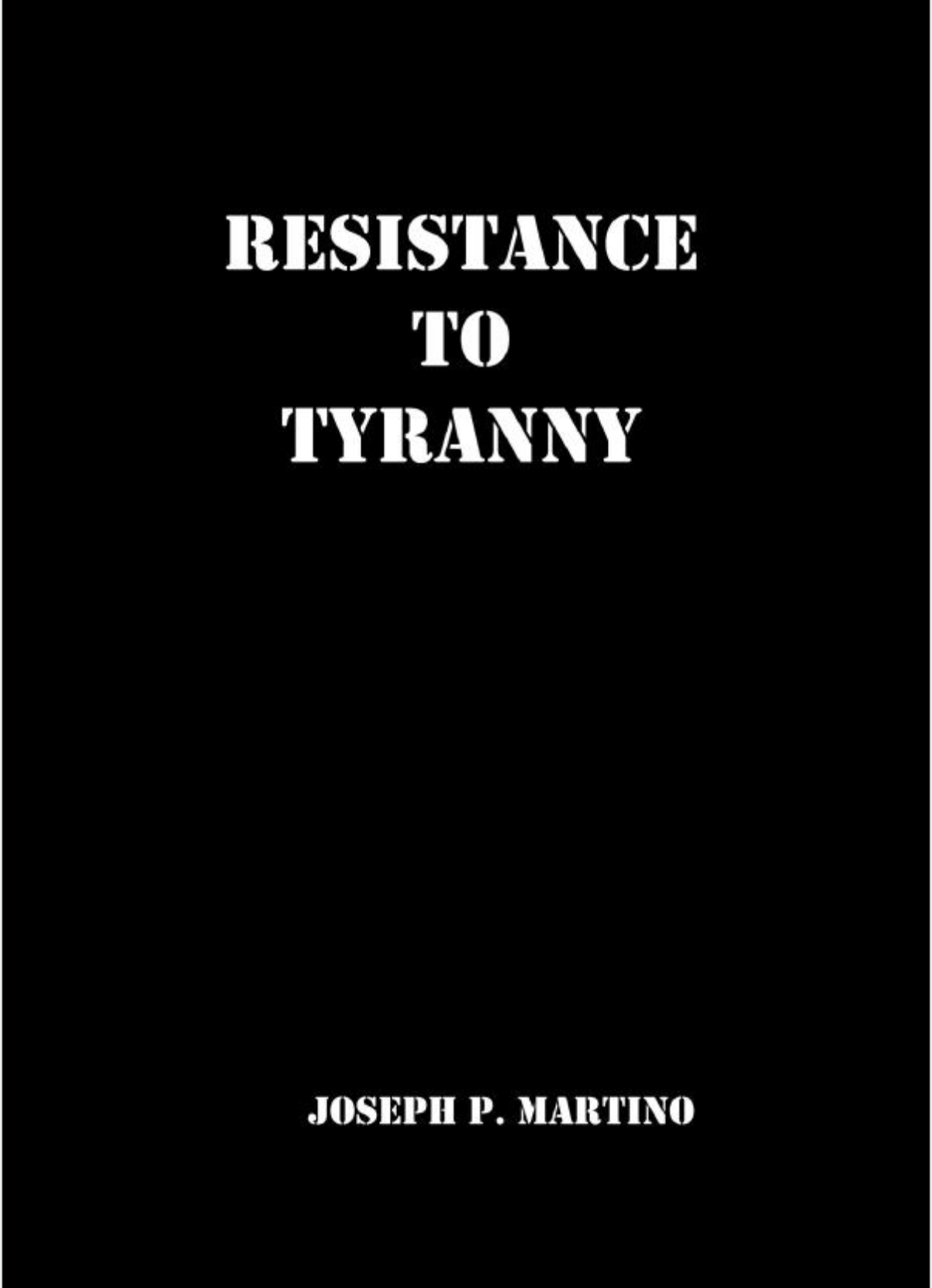 A Valuable Manual for Armed Resistance
A Valuable Manual for Armed Resistance
For resistance forces to have any chance at success in the fight against the ecocidal corporate state and forces aligned with white supremacy and misogyny, they must be skilled. It is with this skilling in mind that we review the book “Resistance to Tyranny” by Joseph P. Martino.
Dr. Martino is a retired Air Force Colonel. He served in Thailand where he conducted research on counterinsurgency. He later was Chairman of the Counterinsurgency Working Group of the Military Operations Research Society. He teaches a course in Just War Doctrine at Yorktown University. He holds degrees in Physics, Electrical Engineering and Mathematics.
Before we dive into the review, a short disclaimer. This book is written from the perspective of a white American male. Martino is clearly in favor of [democratic] empire and is equally clear is his opposition to environmental policies, left-wing organizations, and revolutionary groups in general. These are clear drawbacks to this work.
Setting aside ideological disagreements, “Resistance to Tyranny” is a valuable primer for resistance movements of any bent. The titles of each chapter provide an idea of the breadth of topics covered.
Chapters:
- Why Armed Resistance
- Probability of Success
- Government Response
- Strategy and Tactics
- The Big Picture
- Overt and Covert Resistance
- Personal Weapons
- Personal Equipment
- Survival Skills
- Land Navigation
- Camouflage & Concealment
- Boobytraps
- Weapons Caching
- Logistics
- Training
- Secure Camps
- Safe Houses and Secure Areas
- Communications
- Encryption and Codes
- Getting Your Story Out
- Attack and Defense
- Ambushes
- Sniping and Counter-Sniping
- Assassination
- Sabotage
- Raids
- Strategic Intelligence
- Tactical Intelligence
- Counterintelligence
- Lives, Fortunes, and Sacred Honor
Clearly, this is a broad range of topics. Books, courses, and entire careers of expertise can be built around any one of these topics. Therefore, the information in this book is more of a primer than a detailed exploration. Martino does, however, provide a great many examples from real-world resistance movements—both successful and unsuccessful, both left wing and right wing.
“The provisional IRA had only 150-200 members on active service, with about 50 running daily operations. It had about an additional 800 providing safe houses, intelligence, and supplies. It was organized into cells of 4 to 10 members. Only the leaders knew the leaders of other cells.”
 There are advantages to brevity. The introductory nature of this text makes it ideal for readers with a relatively low amount of practical knowledge around physical resistance. Topics introduced in this book can be explored in more depth via other sources of information and training. The book includes references to a wide variety of such sources.
There are advantages to brevity. The introductory nature of this text makes it ideal for readers with a relatively low amount of practical knowledge around physical resistance. Topics introduced in this book can be explored in more depth via other sources of information and training. The book includes references to a wide variety of such sources.
“The armed wing of a resistance movement has three functions: to survive, to survive, and to survive. So long as it exists in the field and can strike effectively, the government has not won.”
While the book is not perfect, it is an excellent introduction. We recommend that every member, ally, and supporter of Deep Green Resistance purchase this book and consider its lessons.
“What do we mean by the [American] revolution? The war? That was no part of the revolution; it was only an effect and consequence of it. The revolution was in the minds of the people, and this was effected from 1760 – 1775, in the course of fifteen years, before a drop of blood was shed at Lexington.”
John Adams (as quoted by Martino)
“Perhaps the most important role of strategy is a negative one — to avoid anything, no matter how attractive it may seem at the time, that would hinder achieving the goal, or divert resources away from the goal. Every action taken by the resistance movement must be viewed in the light of the overall strategy. Does it further that strategy? Does it bring the goal nearer? Does it in any way create problems that will make achieving the goal more difficult (e.g., by antagonizing some important element of the population)?”
